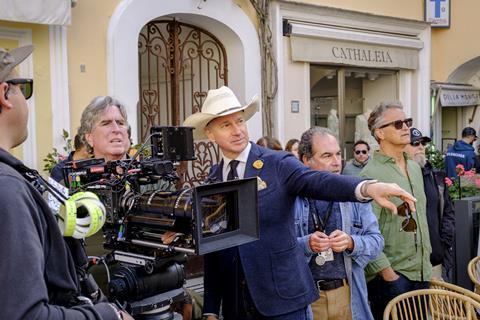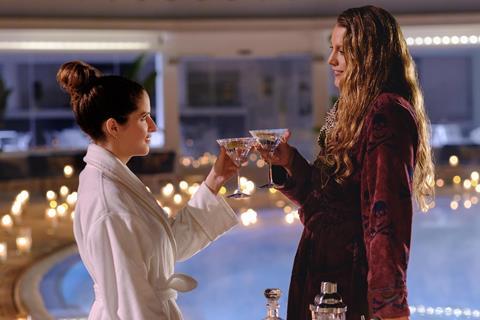Why Paul Feig broke his no-sequel rule with 'Another Simple Favor' and chose to go straight to streaming | Features | Screen
Director Paul Feig explains why he felt compelled to return to the world of glamorous backstabbing for his Prime Video sequel Another Simple Favor.

Paul Feig has always avoided sequels. Despite being behind some of the most successful comedies of the 2010s, including the genre-defining Bridesmaids ($325m worldwide), the US filmmaker never wanted to have a franchise. “I’ve spent a lifetime being let down by sequels,” says Feig. “They either go way too far or they don’t go far enough.”
So, what made the director break his cardinal rule with Another Simple Favor, a follow-up to 2018 sleeper hit A Simple Favor? “It started going to different streamers and then it was suddenly the number one film in the world,” Feig explains of the original’s second wind during the pandemic, after a $100m take at the box office. “There was this feeling of, ‘Gosh, people really like these characters.’”
Blake Lively and Anna Kendrick return for the sequel, which sees the latter’s character Stephanie whisked away to the Italian island of Capri for the wedding of her formerly incarcerated frenemy Emily (Lively). Chaos, murder and blackmail ensue.
Lionsgate teamed with Amazon MGM Studios on Another Simple Favor, which was released via Prime Video in May. Here Feig, who also produces alongside Laura Fischer through Feigco Entertainment, discusses the development of the characters, shooting in Italy and going straight to streaming.
We had a really good first script, but the writers’ strike put a break on everything, and it was a chance to go, ‘I don’t know about this.’ I felt like it wasn’t what I was seeing from all the feedback I was reading on social media from fans. The script was more of a caper, it wouldn’t supply the style and aesthetic I wanted. Do people want to see Emily in a nun disguise versus these fabulous outfits? It just needed a bit of retrofitting.

When we were writing the script, we would send it to [Lively and Kendrick] and get feedback. We always tried to keep the lines of communication open. They’re both good collaborators and they added great things to the script.
When there was that outrage about Blake on other movies, writing stuff… Every movie star I’ve ever worked with gets in there and wants to mould the script. That’s the difference between a good movie and a great movie.
I’d been wanting to do a movie there, because I go to Capri all the time with my wife. I had this idea based on a wedding I had seen in Vogue magazine of Giovanna Battaglia, where she and this hedge fund guy she married took over all of Capri for this giant wedding.
In Capri, you take cabs up to the town square and then back down again, that’s it. We had to haul our equipment around, either with mechanical carts or just manpower. If we needed to stop traffic for shooting, even for two minutes, we’d have thousands of people stacked up and down the roads. We also realised that, in Italy, sometimes it takes four no’s to get a yes.
I had moments when we did the first one thinking maybe it should have been for the streamers because I didn’t think it was the kind of movie people would go to the theatre for. So when we made this deal [with Prime Video], I thought it was good to stick with my original idea that maybe it’s better to be accessible on streaming.
The irony was, once we started shooting in all these big cinematic locations, I thought maybe it should be on the big screen but, by that point, the deal had been done. I’m thrilled to be on Amazon, though.
If you look at some of my other films, they have that element. It’s the stakes of comedy. People say there are no straight comedies getting made anymore, and it’s true, because audiences need more than just jokes. They need high-stakes investments.








:max_bytes(150000):strip_icc():focal(686x236:688x238)/Mandy-Moore-attends-The-85th-Annual-Peabody-Awards-060225-1-7030a9d4861541ae81528f2770a62a7d.jpg)

